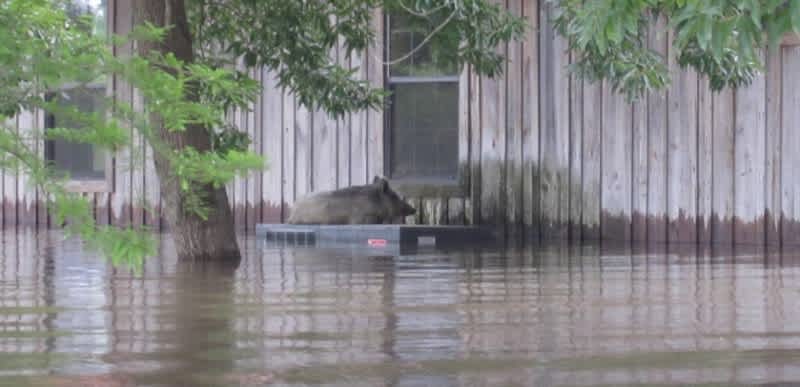Feral Pigs Move in on Louisiana National Park
OutdoorHub Reporters 05.20.13

Hurricane Katrina was one of the most devastating events for Louisiana in recent memory, and it seems to have brought in yet another disaster. Inside Jean Lafitte National Park is the Barataria Preserve, 23,000 acres of wetlands and forests containing some of the most varied wildlife in the state. Included are more than 200 species of birds, along with numerous alligators, armadillos, and big game. The preserve faces many dangers, including rising tides and man-made headaches, but the most pressing is the park’s new resident: the feral pig.
According to the National Geographic, surveys of the preserve before Hurricane Katrina showed no pigs inside the area, although they were suspected to exist nearby in small numbers. After the hurricane and the devastation that came along with it, pigs appeared in the preserve and their numbers have been skyrocketing ever since. So much so that biologist Craig Hood calls the animals “the most important natural resources issue at Barataria Preserve.” It is suspected that the hurricane may have swept a few pigs into the eastern edge of the preserve from another area, and a few are all that it takes.
Hood led the second survey of the preserve in 2012, placing camera traps to capture glimpses of the pigs when they come out at night. The results were worrying.
“We have pigs in all the major habitats of the park,” said the preserve’s natural resources manager Dusty Pate. “They are everywhere.”
Not only did surveyors find pigs in the forested section of the preserve, they also discovered a sizable pig presence in the marshes.
While nearby Texas has taken much of the spotlight with their hog problem, Louisiana is also suffering from the badly behaved swine. Hogs breed quickly, are highly adaptable and extremely destructive to other species and native plants. Ground-nesting birds are especially vulnerable, as their eggs have a habit of disappearing down a hog’s gullet. In this regard, not even alligator eggs are safe.
It seems humans are also struggling to outwit the animals. In an unrelated study, researchers had set up reptiles and amphibians in plywood shelters across the preserve. Unfortunately, the pigs have discovered that behind these flimsy wooden boxes await a tasty, if scaly, dinner. The hogs have begun seeking out these plywood deposits and naturally, researchers arrive to find their shelters–and their subjects–in shambles.
Eating research sites is hardly the worst the pigs are capable of. Entire sections of the preserve are being torn up in what are called “eat-outs,” including the area’s vulnerable wetlands. Feral pigs are capable of digging deep holes to reach edible roots, the destruction of which can tear apart a previously balanced ecosystem.
“I’ve been in areas of marsh where pigs have torn up multiple acres,” Pate said, describing how the pigs literally chew the scenery.
Much like in other parts of the country where feral pigs have become a nusiance, Louisiana is weighing options to keep the animals under control. In Barataria Preserve, biologists wait at night armed with 12 gauge shotguns and other firearms, hoping to make a dent in the population. While the park is entertaining ideas for an aerial approach using helicopters, officials are hoping for something more lasting.

